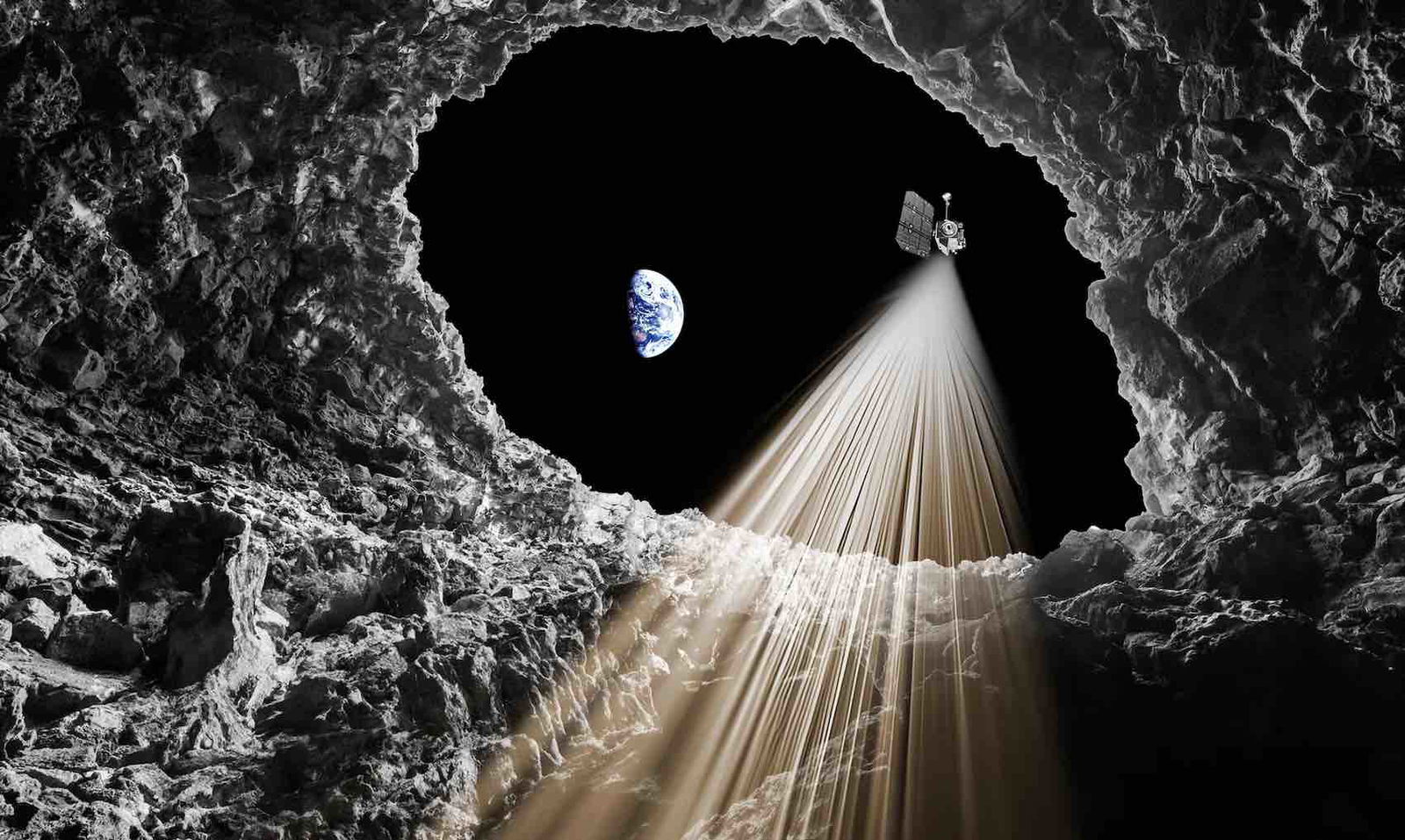For the first time, scientists have confirmed the existence of an underground tunnel-like feature near the landing site of the first crewed mission to the Moon. The discovery concludes almost half a century of speculation involving the suspected existence of caves below the lunar surface.
On July 20, 1969, astronauts Neil Armstrong and Buzz Aldrin became the first humans to set foot on the lunar surface after making a soft landing in the Apollo 11 Lunar Module on the mare plain of the Moon’s famous Mare Tranquillitatis, Latin for “Sea of Tranquility.”
Now, according to the findings of an international team of researchers led by the University of Trento in Italy, the existence of a subsurface tunnel-like lava tube cave beneath the Mare Plain has been confirmed.
A new study published in the journal Nature Astronomy revealed the discovery, which relied on data obtained with NASA’s Lunar Reconnaissance Orbiter (LRO).
The discovery of the tunnel-like feature has been called a significant milestone toward understanding the Moon’s various geological components more fully. It also offers a potential shelter area that could be used by astronauts during future crewed missions.
Lorenzo Bruzzone, a professor at the University of Trento, said the existence of such underground features had long been suspected, although the team’s discovery is the first confirmation that they exist.
“These caves have been theorized for over 50 years,” Bruzzone said in a statement, “but it is the first time ever that we have demonstrated their existence.”
Data originally obtained in 2010 by the Miniature Radio-Frequency (Mini-RF) instrument aboard the LRO, which included radar reflections from a pit discovered in the Mare Tranquilitatis, were reexamined by the research team.
“Thanks to the analysis of the data, we were able to create a model of a portion of the conduit,” said Leonardo Carrer, a researcher at the University of Trento involved with the new findings.
“The most likely explanation for our observations is an empty lava tube,” Carrer said.
Given the demanding environment on the surface of the Moon, where temperatures can reach as much as 127°C on its illuminated side while dropping to frigid lows nearing -173°C on the unilluminated side, lava tube caves could be ideal locations for astronauts to use as shelters on the Moon.
In addition to being ideal environments for subsurface shelters, such an underground tunnel-like feature could also provide a degree of shielding from cosmic and solar radiation that bombards the lunar surface, which can be up to 150 times more powerful there than on Earth.
The Moon’s thin atmosphere also offers little protection from meteorites that, over time, have led to the natural satellite’s characteristic cratered surface. Creating refuges within subsurface lava tube caves could help to mitigate the constant threat posed by such impacts.
Wes Patterson, principal investigator for the Mini-RF based at the Johns Hopkins Applied Physics Laboratory, said the team’s findings demonstrate “both how radar data of the Moon can be used in novel ways to address fundamental questions for science and exploration and how crucial it is to continue collecting remotely sensed data of the Moon.”
“This includes the current LRO mission and, hopefully, future orbiter missions,” Patterson said.
The discovery is outlined in a new study, “Radar evidence of an accessible cave conduit on the Moon below the Mare Tranquillitatis pit,” which was published in Nature Astronomy on July 15, 2024.
Micah Hanks is the Editor-in-Chief and Co-Founder of The Debrief. He can be reached by email at micah@thedebrief.org. Follow his work at micahhanks.com and on X: @MicahHanks.

